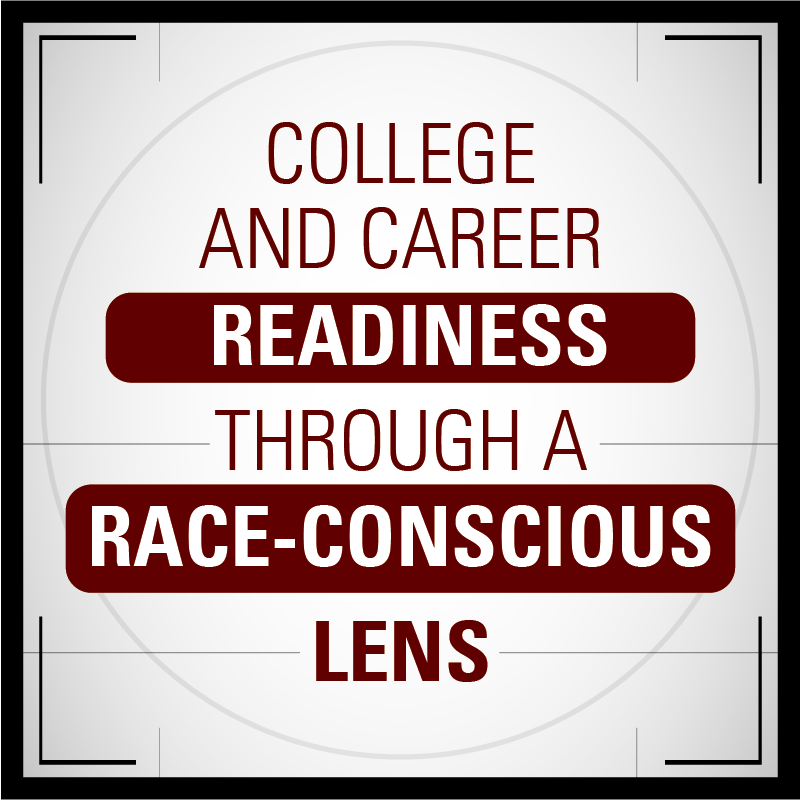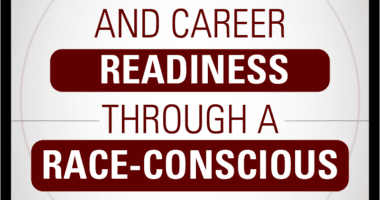
In California, you can often find residents from around the world. It’s the same phenomenon in the Anaheim Union High School District (AUHSD), home to nearly 30,000 students grades 7-12, mostly from families from low-income backgrounds, where many can trace their roots and generational stories from across the globe.
Over the past several years, AUHSD has attempted to better align K-16 educational systems with the world of work and prepare students for life as an engaged citizen. In making this shift, AUHSD has seen students becoming more prepared for college. Test scores, especially in reading and writing, have steadily risen. Moreover, college-going rates, persistence, and GPAs have also significantly and consistently outperformed college averages.
To accomplish this, AUHSD has created a new educational framework called the Career Preparedness Systems Framework (CPSF). For leaders who realize the urgency in shifting drivers to align with the needs of workforce and life preparedness, the framework provides a cohesive and concrete way to implement the new vision. The CPSF encompasses three areas that schools need to focus on:
- 21st century skills, sometimes called soft skills — development of relational and emotional intelligence (critical thinking, creativity, communication, collaboration, and compassion)
- Technical skills (mastery of specific job-related skills through certificates and dual credit community college course completion)
- Development of student voice and purpose
The “through line” to this integrated approach is consistently cultivating and supporting student voice, identity, and purpose. These skills — often labelled as civic skills — help catalyze young people’s engagement in school, foster positive student relationships with peers and adults, and bring purpose to students’ academic and career learning. By centering student voice and purpose within career and academic preparation, the learning process becomes unified and community assets from traditionally different arenas can complement student learning and achievement.
Through implementation of the CPSF, we can build a new transformative educational model that will help our country continue to be a world leader in innovation and job creation into the next century.
One success story is Anthony Gomez, a first-generation English learner with a high school diploma and two dual-credit cybersecurity courses through nearby Cypress College, landed a job with Hulu at more than $65,000 per year. Additionally, through the Anaheim Union Educational Pledge — an articulation agreement with our higher education partners — Anthony is continuing in community college and planning to transfer to UC Irvine, where he is on track to receive a BS in computer science and likely a big pay raise.
Anthony also has developed a sense of purpose: He wants to “pay it forward,” and serve as a mentor to other students. His and many other students’ success stories are resonating with parents and students alike. Anthony’s story is ultimately about equity and access to 21st century jobs and is a result of reframing educational drivers around integrating soft and hard skills and student voice.
More than 40 years ago, the late educator and civil rights leader Robert Moses, who founded The Algebra Project, said, “The most important social problem affecting people of color today is economic access.” Today, when trust in American institutions is ebbing, access to 21st century/future-ready jobs is more vital than ever in monitoring the barometer of social justice.
Michael Matsuda is the superintendent of Anaheim Union High School District
Explore the Other Entries in the Series

Blog Series: College and Career Readiness Through a Race-Conscious Lens
Going to college or entering the workforce after graduating from high school are quintessential milestones for our nation’s students.…
Read more

A New Approach to Supporting Students on Their Journey to College Graduation
As her first semester of college at Delaware State University began in fall 2020, Kadiatu Mansaray had a problem:…
Read more

Redefining College and Career Readiness Through Critical Design
College and career readiness are often assessed by indicators such as test scores and grade point averages. But there…
Read more

How a Student Organization Is Building a Memorial for Victims of Lynching
Students have unique ambitions and perspectives that they often voice through school projects. From learning how to effectively work…
Read more

Youth Participatory Action Research (YPAR) as a Means to College and Career Readiness
Imagine how schools might be different if educators co-crafted their content, policies, procedures, and expectations with the young people…
Read more

How A School District is Helping First-Generation Students Shape Their Career Goals
In California, you can often find residents from around the world. It’s the same phenomenon in the Anaheim Union…
Read more
-------------------------
By: Michael Matsuda
Title: How A School District is Helping First-Generation Students Shape Their Career Goals
Sourced From: edtrust.org/the-equity-line/how-a-school-district-is-helping-first-generation-students-shape-their-career-goals/
Published Date: Mon, 22 Nov 2021 19:08:08 +0000
Read More
Did you miss our previous article...
https://prohealthsciences.com/pandemic-news/travel-hacking-101-a-beginners-guide-to-the-process
 General Health and WellnessFitness and ExerciseSupplements and VitaminsPandemic NewsVideosPrivacy PolicyTerms And Conditions
General Health and WellnessFitness and ExerciseSupplements and VitaminsPandemic NewsVideosPrivacy PolicyTerms And Conditions
